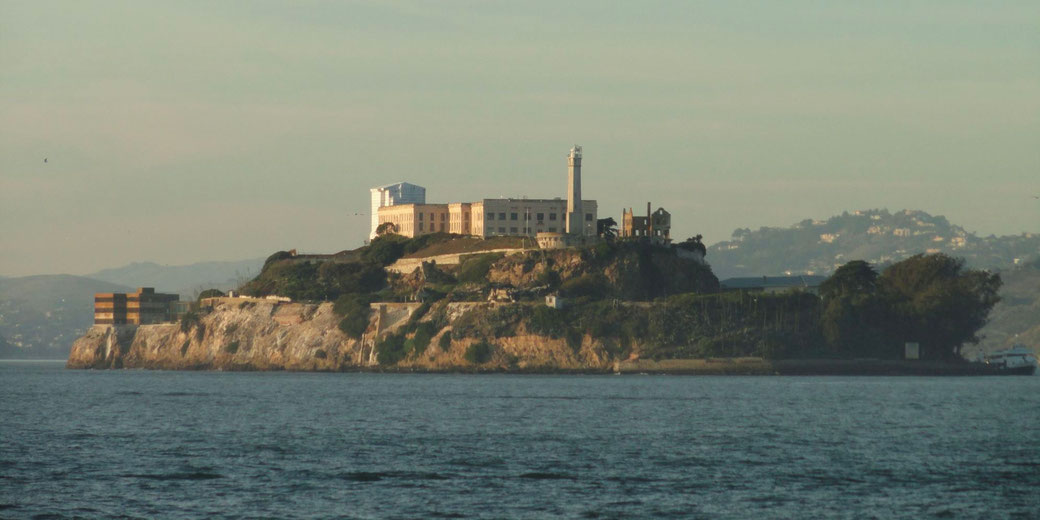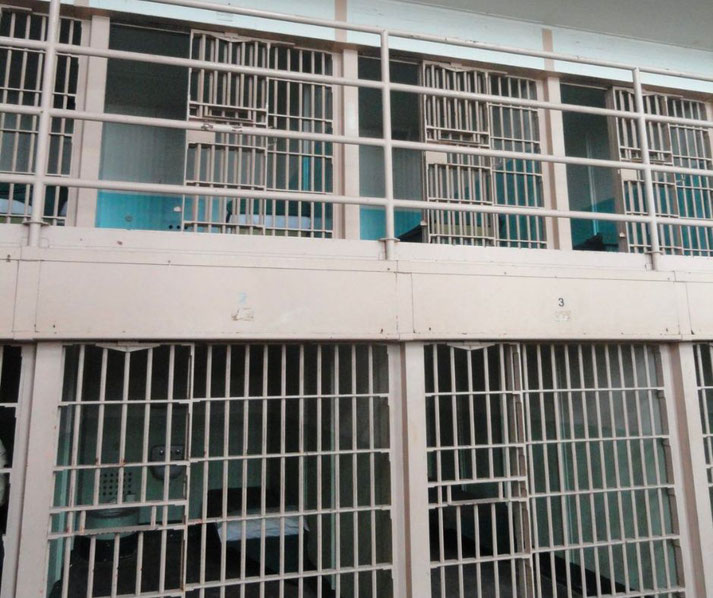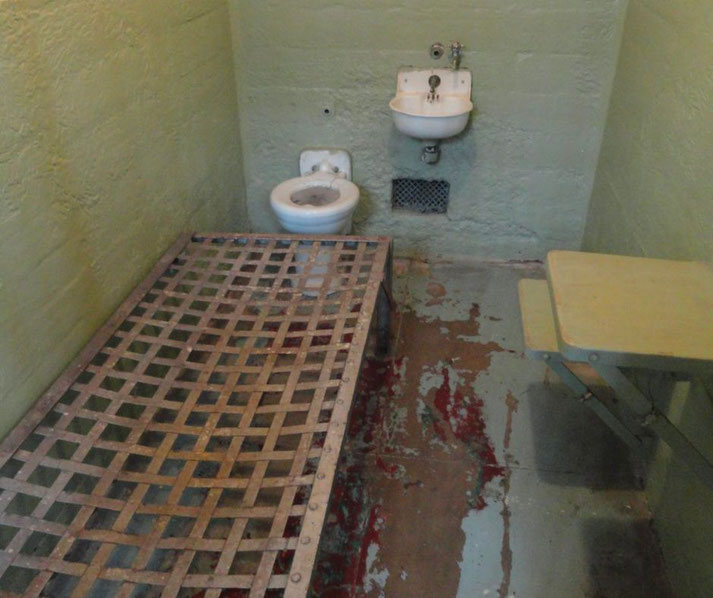The dark history of Alcatraz, America's most notorious prison

In the heart of San Francisco Bay, often hidden by fog and surrounded by treacherous currents, lies Alcatraz Island.
Known as "The Rock," this small, rugged island draws in millions of visitors each year to learn about its history of harsh incarceration, infamous criminals, and daring escapes.
So, why was Alcatraz built in such a harsh place?
Who were some of its most notorious inmates?
And did any of them really manage to escape?
Alcatraz's imposing location
Alcatraz Island is situated in San Francisco Bay, California, approximately 1.25 miles offshore from the city of San Francisco.
The island is around 22 acres in size, with its highest point reaching up to 135 feet above sea level.
From the island people can get a stunning panoramic view of the San Francisco skyline and the Golden Gate Bridge.
However, the island is not a comfortable place to be. It is rugged and rocky, with steep cliffs on all sides, which is why many people saw this as a natural fortress.
However, long before Alcatraz became a symbol of confinement and isolation, it held significant cultural and spiritual importance for the indigenous peoples of the area.
The Ohlone people, a group of Native American tribes inhabiting the San Francisco Bay area, are believed to have been the first to make use of the island.
For the Ohlone, Alcatraz was both a spiritual place. But it was a rich source of eggs and birds, which were important food resources.
It is said that the island was specifically used for isolation and punishment for those who violated tribal laws.
Its early use as a military base
Then, Alcatraz's journey as a military fortification began in the mid-19th century, during a time of rapid expansion and change in California.
The Gold Rush of 1849 had brought a surge of settlers to the area. As a result, the U.S. government saw the need to protect the burgeoning San Francisco Bay area and its vital seaport.
So, in 1850, President Millard Fillmore claimed Alcatraz Island for military purposes.
The island's steep cliffs and isolated position made it an ideal site for coastal defense. Construction of the fort, known as Fort Alcatraz, began in 1853.
By 1859, the fort was equipped with more than 100 cannons, making it the most heavily armed fort west of the Mississippi River.
During the Civil War, Alcatraz played a crucial role in protecting the bay from potential Confederate raids.
Consequently, the island served as the San Francisco Arsenal, storing weaponry and ammunition.
It also held Confederate sympathizers and prisoners of war.
In the years following the Civil War, the military shifted its focus from coastal defense to the maintenance of order during the turbulent post-war period.
The island eventually became a long-term detention facility for military prisoners: particularly those who had committed serious offenses or were considered high-risk.
Transition to a federal penitentiary
By the late 19th century, the island's role as a military fortification had largely been eclipsed by its function as a military prison.
In 1907, Alcatraz was officially designated as the Western U.S. Military Prison. The old fort was demolished, and a massive new cellhouse was constructed.
Then, in the early 1930s, the nation saw a period of increasing crime and lawlessness.
This was due to Prohibition, which had given rise to organized crime. Therefore, the country was grappling with a wave of high-profile criminal activity.
In response to this crime wave, the U.S. government sought to create a prison that could securely hold the nation's most dangerous and notorious criminals.
Alcatraz, with its isolated location and existing prison infrastructure, was seen as the ideal location for such a facility.
In 1933, the U.S. Army transferred Alcatraz to the Department of Justice, and the island was placed under the jurisdiction of the Federal Bureau of Prisons.
Over the next year, the prison was extensively renovated and fortified. The old military prison was converted into a maximum-security penitentiary designed to be 'escape-proof'.
To achieve this, the cellhouse was modernized, guard towers were added, and strict new security measures were implemented.
Alcatraz Federal Penitentiary officially opened on July 1, 1934. In the announcement to the media, it was stated that the prison was designed to house prisoners who were considered particularly dangerous, disruptive, or prone to escape attempts.
Its first warden, James A. Johnston, set a strict regime with rigid rules and severe discipline.

The most famous people imprisoned on Alcatraz
During its 29 years of operation, Alcatraz housed some of the most notorious criminals in American history.
One of the most famous inmates of Alcatraz was Al Capone, the notorious Chicago gangster.
Capone, convicted of tax evasion, was transferred to Alcatraz in 1934 after it was discovered that he was bribing guards and receiving special privileges at the U.S. Penitentiary in Atlanta.
At Alcatraz, Capone was unable to wield his influence, and he spent four and a half years on the island before being released due to health issues.
Another infamous inmate was George "Machine Gun" Kelly. He a notorious gangster known for his involvement in kidnapping and bank robbery.
Kelly spent 17 years on Alcatraz, where he was reportedly a model prisoner.
Robert Stroud, known as the "Birdman of Alcatraz," was another notable inmate, but is less known today.
Despite his nickname, Stroud was not permitted to keep birds at Alcatraz as he had at previous prisons.
However, he had become famous for writing a book in which he shared his knowledge about how to raise birds.
Did anyone successfully escape from Alcatraz?
The perceived inescapability of Alcatraz Federal Penitentiary was a key part of its reputation.
However, this did not deter a number of inmates from attempting to break free from "The Rock."
Over the 29 years of the prison's operation, there were 14 recorded escape attempts involving 36 inmates.
The first recorded escape attempt occurred in 1936, just two years after the prison opened.
Joseph Bowers, serving a 25-year sentence for bank robbery, tried to scale the fence in the prison's recreation yard.
He was shot by a guard and fell to his death.
However, one of the most violent escape attempts was the Battle of Alcatraz in 1946.
Six inmates, led by Bernard Coy, overpowered the guards and took control of the cellhouse.
They hoped to escape using the prison's boat, but their plan fell apart when they couldn't find the key to the yard door.
The ensuing battle lasted for two days and resulted in the deaths of two guards and three inmates.
Then, the most famous escape attempt from Alcatraz is undoubtedly the one made by Frank Morris and the Anglin brothers, John and Clarence, in June 1962.
Over a period of several months, the trio chiseled away at the vent openings in their cells using makeshift tools, including a stolen drill and discarded saw blades.
They concealed their work with cardboard and paint and left dummy heads made of plaster, paint, and real hair in their beds to fool the guards.
On the night of June 11, 1962, they crawled through the vents, climbed to the roof of the cellhouse, descended to the ground, and launched a raft made of raincoats from the northeastern shore of the island.
Despite one of the most extensive manhunts in history, the men were never found.
The official report concluded that they drowned in the frigid waters of the bay, but the absence of bodies has led to enduring speculation that they may have survived, adding to the Alcatraz legend.

Why was Alcatraz prison closed?
Despite its reputation as America's most formidable prison, a combination of factors led to the decision to shut down the facility.
One of the primary reasons for the closure was the high cost of operations.
Alcatraz was one of the most expensive prisons in the U.S. system to maintain.
Everything, from food and supplies to fresh water, had to be shipped to the island.
The salt air and sea spray also caused significant structural damage to the buildings, leading to high maintenance costs.
Another factor was the prison's aging infrastructure. The facilities, originally built for military use in the early 20th century, were deteriorating and in need of extensive repairs.
The cost of necessary renovations, including a new sewage system and modernized facilities, was estimated to be in the millions, a price the government was unwilling to pay.
The final blow came in the form of public opinion. The harsh conditions at Alcatraz and the treatment of prisoners had been a subject of controversy for years.
By the early 1960s, the trend in corrections was moving towards rehabilitation rather than punishment, a model that Alcatraz, with its focus on isolation and discipline, did not fit.
On March 21, 1963, Alcatraz Federal Penitentiary officially closed its doors for the last time.
The remaining inmates was transferred to other federal prisons, and the once-feared island prison fell silent.
The closure was met with little fanfare, marking a quiet end to one of the most infamous prisons in American history.
What do you need help with?
Download ready-to-use digital learning resources
Copyright © History Skills 2014-2025.
Contact via email
With the exception of links to external sites, some historical sources and extracts from specific publications, all content on this website is copyrighted by History Skills. This content may not be copied, republished or redistributed without written permission from the website creator. Please use the Contact page to obtain relevant permission.





